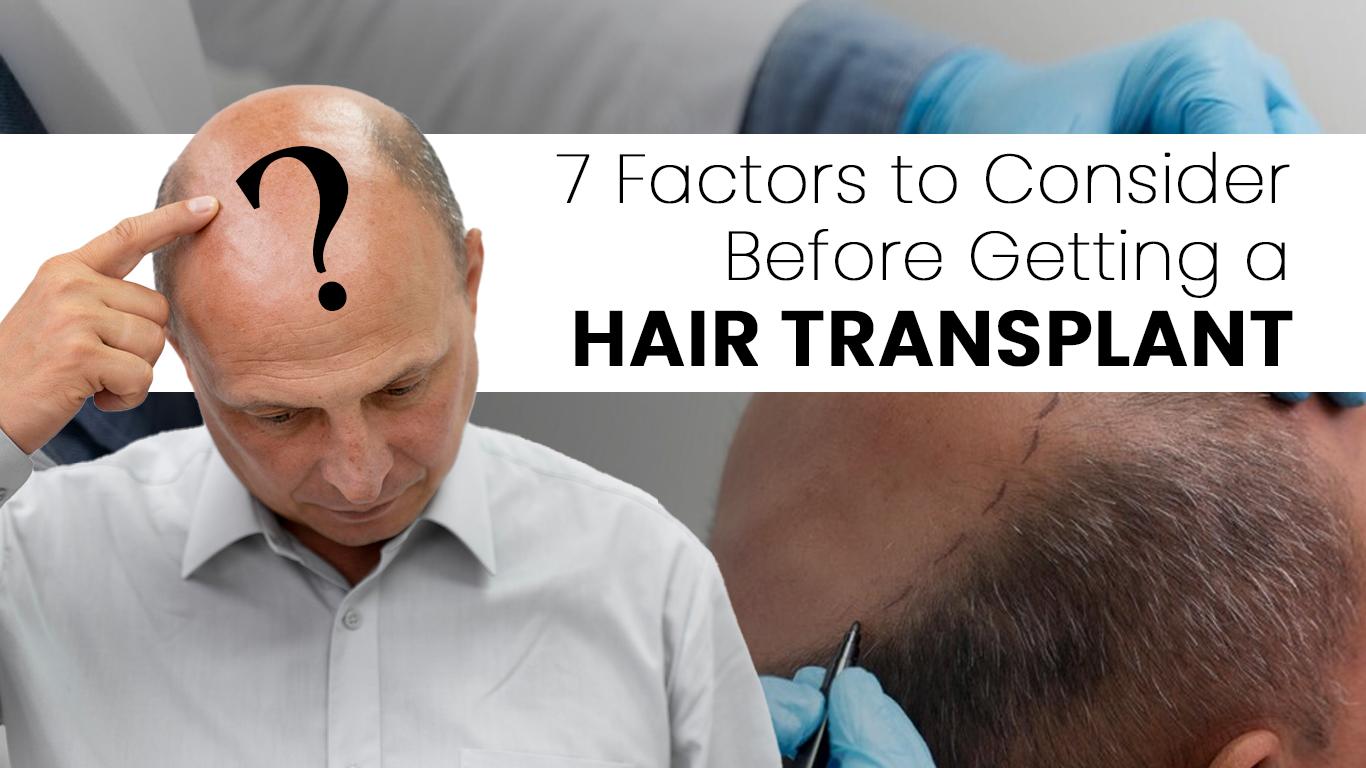
Hair loss can be a frustrating experience, leading many to consider hair transplants as a solution. If you're thinking about this procedure, it's crucial to be well-informed. Here are seven key factors you should consider before making your decision.
1. Understanding the Procedure
A hair transplant involves moving hair from one part of your body (typically the back or sides of your head) to the thinning or balding areas. This process is usually done in one of two ways: Follicular Unit Transplantation (FUT) or Follicular Unit Extraction (FUE).
FUT: In this method, a strip of scalp is removed, and the hair follicles are removed from it.
FUE: This technique involves removing individual hair follicles directly from the scalp.
Each method has its pros and cons. FUT can result in a more noticeable scar but might be better for covering large areas. FUE leaves minimal scarring but is more time-consuming and might be less suitable for extensive hair loss.
2. Costs Involved
Hair transplants can be expensive, and they are often not covered by insurance because they are considered cosmetic procedures. The cost can range from a few thousand to tens of thousands of dollars depending on the extent of hair loss, the technique used, and the surgeon’s experience.
It's important to get a detailed estimate before proceeding and consider whether the expense fits within your budget. Also, be aware that you might need more than one session to achieve your desired results, which can further increase the cost.
3. Potential Risks and Side Effects
Like any surgical procedure, hair transplants come with risks. Common side effects include:
Scarring: Both FUT and FUE can leave scars, though FUE scars are typically smaller and less noticeable.
Infection: As with any surgery, there is a risk of infection at the transplant sites.
Pain and Swelling: Some discomfort and swelling are common after the procedure.
Unnatural-Looking Hair Growth: There is a risk that the transplanted hair might not grow in a natural-looking way, leading to dissatisfaction with the results.
Discuss these risks with your surgeon and make sure you understand how they plan to minimize them.
4. Realistic Expectations
It's essential to have realistic expectations about what a hair transplant can achieve. While the procedure can significantly improve the appearance of thinning hair, it’s unlikely to restore your hair to its original density. The quality of the results depends on factors such as the extent of your hair loss, the quality of your donor hair, and the skill of your surgeon.
Consult with your surgeon to understand what kind of results you can truly expect. Looking at before-and-after photos of previous patients can also give you a better idea of potential outcomes.
5. Choosing the Right Surgeon
Selecting a skilled and experienced surgeon is critical to the success of your hair transplant. Do thorough research to find a reputable professional. Here are some tips:
Check Qualifications: Ensure the surgeon is board-certified and specializes in hair transplants.
Read Reviews: Look at online reviews and testimonials from previous patients.
View Portfolio: Ask to see before-and-after photos of their work.
Consultation: Have an in-person consultation to discuss your case and see if you feel comfortable with the surgeon.
A good surgeon will not only have technical expertise but also an artistic eye to ensure the transplanted hair looks natural.
6. Post-Procedure Care
The success of your hair transplant also depends on how well you follow post-procedure care instructions. Here are some general tips:
Avoid Touching the Transplanted Area: The new transplants are delicate and need time to settle in.
Follow Medication Guidelines: Your doctor might prescribe antibiotics to prevent infection and painkillers to manage discomfort.
Be Gentle: Avoid intense physical activity and protect your scalp from the sun.
Attend Follow-Up Appointments: These are crucial for monitoring your progress and addressing any issues.
Neglecting post-procedure care can affect the outcome, so it’s important to adhere to your surgeon’s advice closely.
7. Alternative Treatments
Before opting for a hair transplant, it’s worth exploring other treatment options. Some non-surgical treatments can help with hair loss:
Medications: Finasteride (Propecia) and minoxidil (Rogaine) are FDA-approved treatments that can help slow hair loss and, in some cases, promote regrowth.
Low-Level Laser Therapy (LLLT): This treatment uses red light to stimulate hair follicles and can be used at home or in a clinical setting.
Platelet-Rich Plasma (PRP): This involves injecting your own blood plasma into the scalp to encourage hair growth.
Discuss these alternatives with your doctor to see if they might be suitable for your condition.
Conclusion
Deciding to get a hair transplant is a significant decision that requires careful consideration of multiple factors. Understanding the procedure, costs, risks, and potential outcomes is essential. Equally important is choosing a qualified surgeon and following post-procedure care instructions. Lastly, don’t forget to consider non-surgical alternatives that might offer benefits with less risk and expense. By taking all these factors into account, you can make an informed decision that best suits your needs and goals.